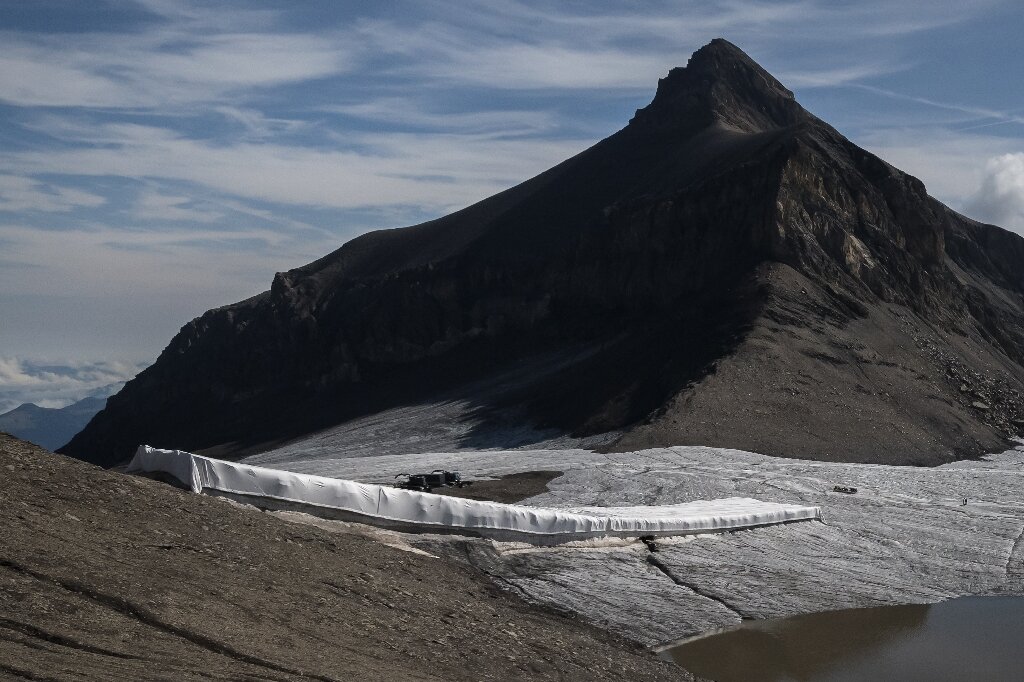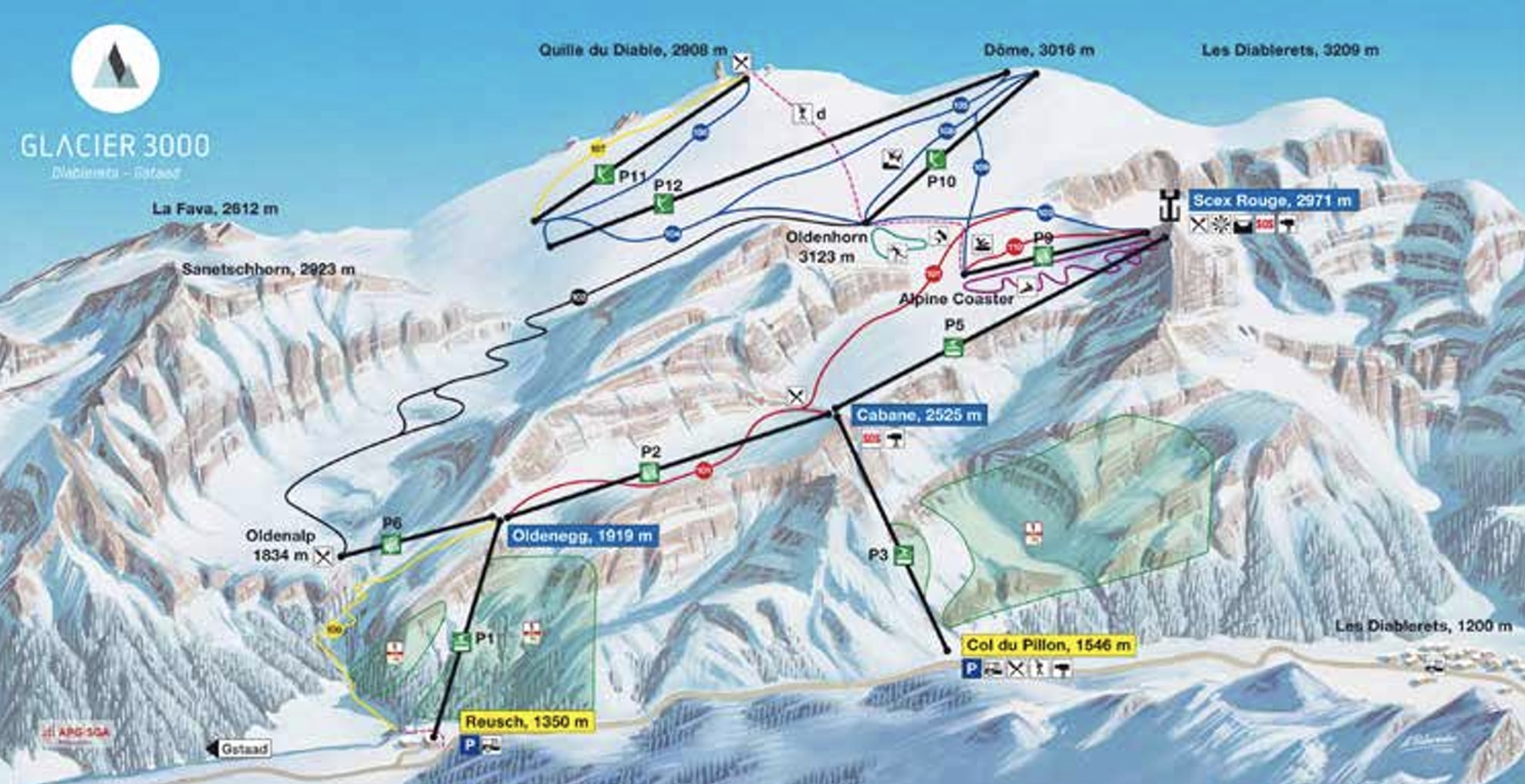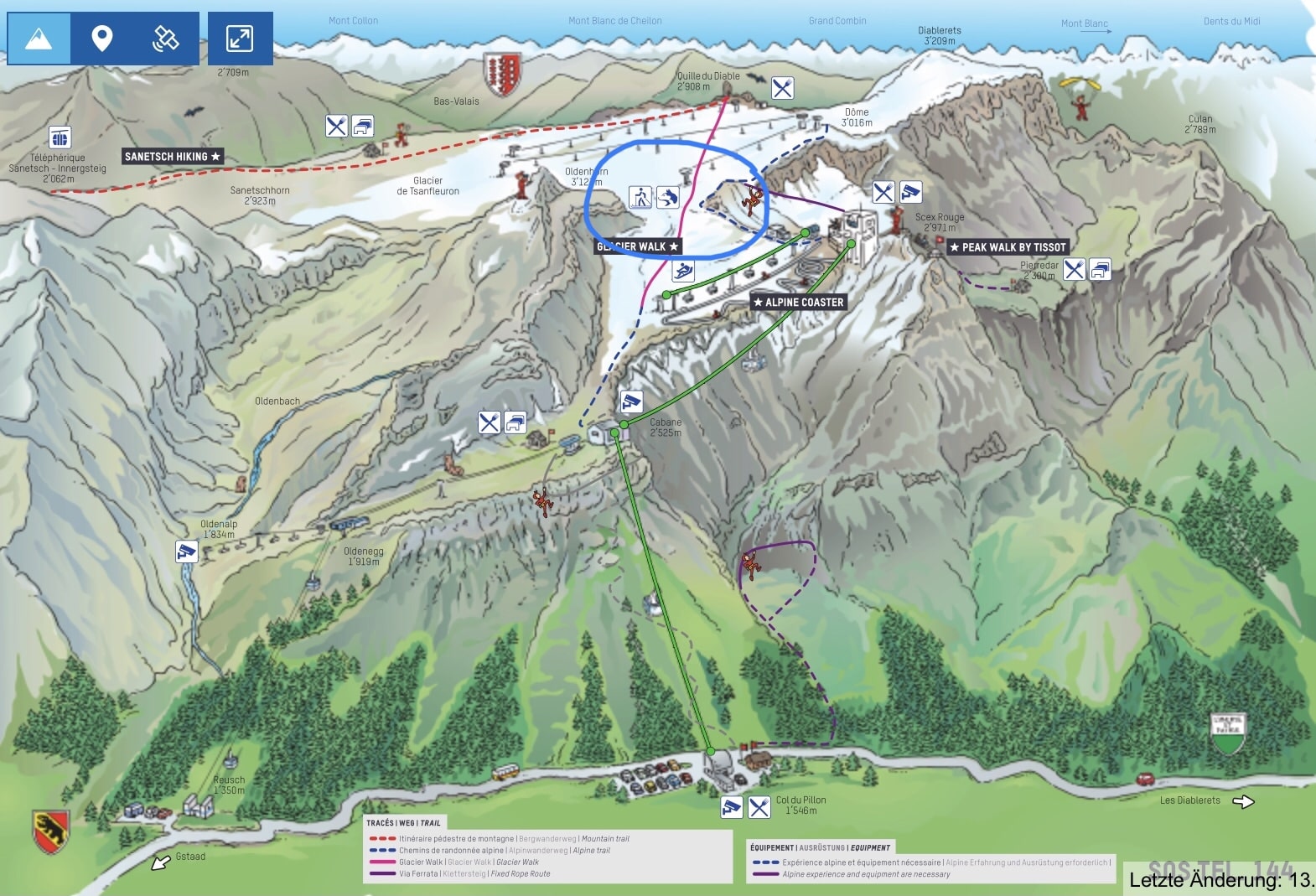
The Tsanfleuron Pass between Gstaad and Les Diablerets in Switzerland has been exposed for the first time in 2,000 years. The rocky pass was covered under thick ice measuring still 50ft (15m) as recently as 10 years ago. But the permafrost melt this year was about three times the 10-year average, after a below-average snowfall last winter and two heatwaves that swept across Europe.
The Tsanfleuron Pass is the ridge between the Tsanfleuron Glacier and Scex Rouge and effectively marks the border between the Swiss cantons of Vaud and Valais. The Tsanfleuron Glacier measures 2.2 miles and culminates at the Dôme at 3,016 m. It is situated in the Glacier3000 ski resort. In summer, the Glacier3000 resort offers a glacier walk from the top of the gondola station at Scex Rouge across to the Tsanfleuron Glacier.
The glacier run is serviced by three t-bars, the first of which, the Dôme t-bar, was installed in 1971. A second t-bar was added in 1979 and a third in 1993. The resort has made an effort to protect some of the snow and ice by covering it with a white tarp over the summer period. The glacier run is open for skiing from October to the first week of May.


In August, it was believed that by the end of September the pass would have resurfaced, however, this came about even sooner than anticipated by glaciologist Dr. Mauro Fischer of Berne University. Dr. Fischer, who often appears on Swiss TV, said in an interview with La Tele, “I am surprised at the speed of the melt. The glaciers lost ice this year at a speed not seen in 60 years. The speed is extraordinary.” His concern is also based on the fact that the glacial ice forms an important source of freshwater supply in Switzerland and the effects could be disastrous if the glaciers disappear.
Last weekend, Greenpeace placed a literal giant band-aid on the exposed rocky path between the two glaciers, calling upon the Swiss government for action. There have been several private initiatives to save the glaciers, like the MortAlive project, but what is desperately needed is a coordinated, well-funded federal effort to make a real difference.
https://www.instagram.com/reel/CicSPRZNwEg/?utm_source=ig_web_copy_link